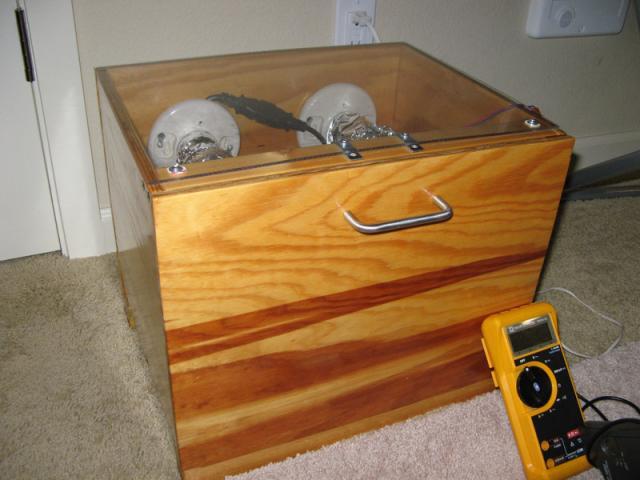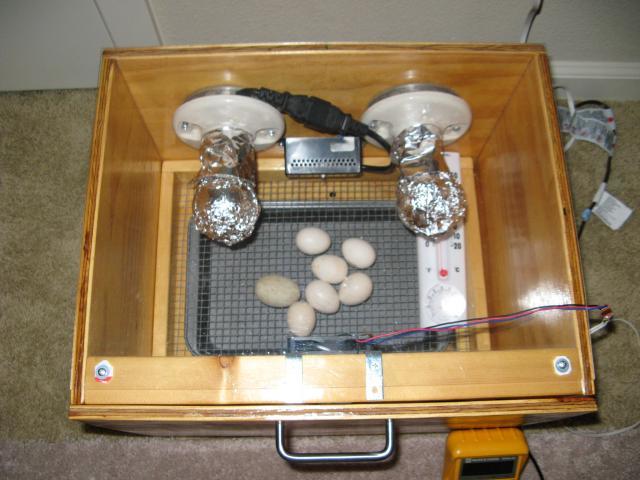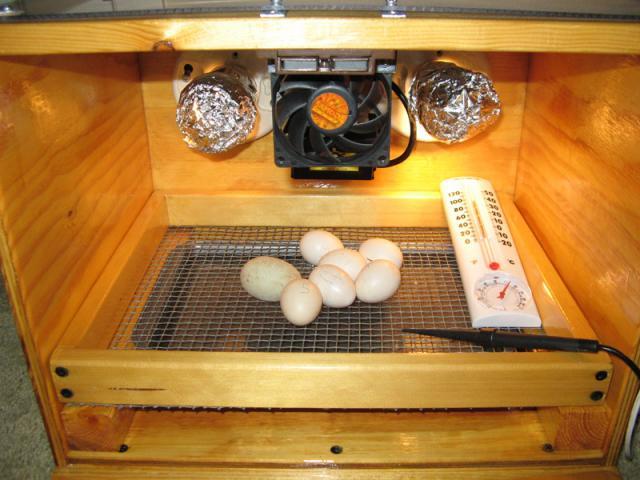Thanks Davaroo (and others) for linking other viable thermostat options out there. That is good information to know.
That Repti 500r sounds pretty nice for the money and has the advantage of being digital. Though you might still need a second plug on the incubator to power always-on stuff like a fan or second light.
A BIG thanks also to Rebelcowboy... for demonstrating how to get the hot water t-stat setup to temp-swing less. If I hadn't seen your video and comprehended your explanation, I'm sure I would have stuck my t-stat on the opposite side of the incubator... backside flat up against the cooler... and then been frustrated at the huge, uncontrollable temp swings. Then I would have probably called the hot water t-stat a piece of #$%@. But...
I am using one in my incubator I just build which has: 1.5" thick styrofoam cooler, 4 large paver stones w/ air gaps around them for thermal mass, 60W light/heat source, small computer circulating fan and glass pane in lid for observation.
I have the back of the t-stat about 2.5" from the light bulb (nothing in-between, direct-line-of-sight to t-stat from bulb). This has given me a sweet temperature swing.... from 99.7 - 100.2 on one gauge, 100 steady on another gauge, 100 steady on glass bulb thermo stuck in plastic easter egg filled with liquid dish soap (my homemade water weasel)... for the last 12 hours straight. I'm happy with these results.
My light bulb cycle time is 3 minutes on, 5 minutes off. (I've time elapsed recorded with a webcam for the past few days as I dial it in... geeky... I know!). So this leads me to a question.
Anyone know the cycle life of one of these t-stats? How about a normal 60W light bulb?
On/off every 8 mins = 180 cycles /day x 25 days (21 + couple days for prep) = 4500 cycles. That doesn't sound like too many to worry about... thoughts?
Cheers!
That Repti 500r sounds pretty nice for the money and has the advantage of being digital. Though you might still need a second plug on the incubator to power always-on stuff like a fan or second light.
A BIG thanks also to Rebelcowboy... for demonstrating how to get the hot water t-stat setup to temp-swing less. If I hadn't seen your video and comprehended your explanation, I'm sure I would have stuck my t-stat on the opposite side of the incubator... backside flat up against the cooler... and then been frustrated at the huge, uncontrollable temp swings. Then I would have probably called the hot water t-stat a piece of #$%@. But...
I am using one in my incubator I just build which has: 1.5" thick styrofoam cooler, 4 large paver stones w/ air gaps around them for thermal mass, 60W light/heat source, small computer circulating fan and glass pane in lid for observation.
I have the back of the t-stat about 2.5" from the light bulb (nothing in-between, direct-line-of-sight to t-stat from bulb). This has given me a sweet temperature swing.... from 99.7 - 100.2 on one gauge, 100 steady on another gauge, 100 steady on glass bulb thermo stuck in plastic easter egg filled with liquid dish soap (my homemade water weasel)... for the last 12 hours straight. I'm happy with these results.
My light bulb cycle time is 3 minutes on, 5 minutes off. (I've time elapsed recorded with a webcam for the past few days as I dial it in... geeky... I know!). So this leads me to a question.
Anyone know the cycle life of one of these t-stats? How about a normal 60W light bulb?
On/off every 8 mins = 180 cycles /day x 25 days (21 + couple days for prep) = 4500 cycles. That doesn't sound like too many to worry about... thoughts?
Cheers!





